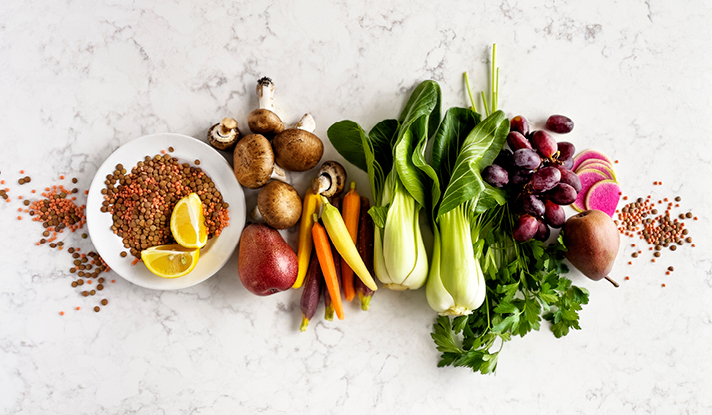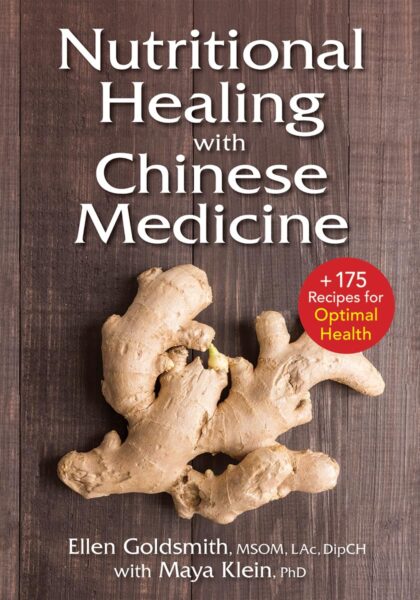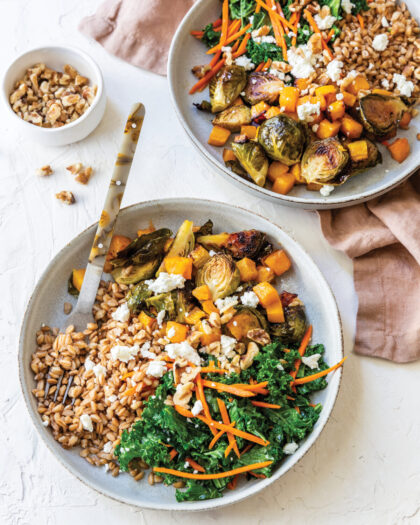As the chill of winter fades, spring arrives with fresh energy, growth, and renewal. In Traditional Chinese Medicine (TCM), spring is associated with the Liver and the Wood element, making it the perfect season to cleanse, rejuvenate, and refresh both body and mind. The best way to align with this seasonal shift? Eating foods that support the liver, aid digestion, and boost energy levels.
In Nutritional Healing with Chinese Medicine: Plus 175 Recipes for Optimal Health, Ellen Goldsmith explains how seasonal eating enhances health and balance. Spring is all about light, fresh, and vibrant foods that help move Qi (energy), promote detoxification, and restore vitality.
If you’re ready to embrace spring with nourishing, healing meals, these Chinese medicine-inspired recipes are perfect for the season!
🌱 Spring Eating: What to Focus On
Spring is the season of growth and renewal, meaning your diet should include:
✅ Leafy greens – Spinach, kale, bok choy, and mustard greens help detox the liver.
✅ Sour flavors – Lemon, lime, vinegar, and fermented foods stimulate digestion.
✅ Light proteins – Fish, eggs, tofu, and legumes provide nourishment without heaviness.
✅ Fresh herbs – Cilantro, parsley, and mint help clear toxins and refresh the body.
Avoid heavy, greasy foods, as they can slow digestion and make you feel sluggish. Instead, opt for light, cooked meals that are easy to digest and rich in nutrients.
Spring Tonic Congee
Congee is a traditional Chinese breakfast dish that can be varied in so many delicious ways. This simple version has a nice blend of textures; a delightfully sweet, mild flavor; and earthiness, thanks to the adzuki beans. You can customize it by adding a furikake-style sprinkle or any of the other tasty toppers.
MAKES 4 SERVINGS
Ingredients
2 tbsp dried adzuki beans – 30 mL
11⁄2 tbsp hato mugi (Job’s tears) – 22 mL
1⁄2 cup sweet (glutinous) brown rice (or brown Arborio rice) – 125 mL
2 tbsp dried Chinese yam (dioscorea) 30 mL
1 tbsp grated gingerroot 15 mL
Instructions
- Place adzuki beans in a medium bowl and cover with water. Let stand overnight. Drain well.
- Meanwhile, place hato mugi in another medium bowl and cover with water. Let stand for 1 hour or overnight if you plan to cook it in the morning. Drain well.
- In a medium saucepan, combine 6 cups (1.5 L) water, adzuki beans, hato mugi, rice and Chinese yam. Bring to a boil. Reduce heat to low, cover and simmer, stirring occasionally, for 2 hours. The congee should have a souplike consistency; if there is not enough liquid left in the pan, add up to 1⁄2 cup (125 mL) water. Stir in ginger. Cover and let cool for 10 minutes.
- Serve immediately or transfer to an airtight container and refrigerate for up to 3 days. Warm in a small saucepan over low heat before serving
Variation
To nourish the stomach and spleen specifically — and to add a sweeter taste — cook 1 cup (250 mL) chopped peeled seeded winter squash (such as kabocha, acorn or butternut) in the congee.
Herbed Nettle and Asparagus Risotto
Nettles have a lovely, fresh vegetal taste with mineral notes. They make a wonderful partner to the grassy asparagus in this risotto.
MAKES 6 SERVINGS
Ingredients
3 cups chicken broth or vegetable broth – 750 mL
2 tbsp avocado oil – 30 mL
1⁄4 cup finely chopped onion – 60 mL
2 cups shortgrain brown rice – 500 mL
1⁄4 cup dried nettles (or 2 cups/500 mL 60 mL chopped fresh nettle leaves)
8 oz asparagus, trimmed and cut into 1inch (2 .5 cm) pieces – 250 g
1⁄2 cup minced mixed fresh herbs, such as basil, chives and/or parsley – 125 mL
Salt to taste
Instructions
- In a medium saucepan, combine broth and 3 cups (750 mL) water. Bring to a simmer over low heat. Turn off heat, cover and keep warm.
- In another medium saucepan, heat oil over medium-high heat. Add onion and cook, stirring often, for 3 to 5 minutes or until translucent.
- Stir in rice and cook, stirring, for 1 or 2 minutes or until coated and translucent. Reduce heat to medium-low and, using a heatproof spatula, stir in about 1 cup (250 mL) of the warm broth. Cook, stirring almost constantly and scraping bottom of pan to prevent sticking, for 5 to 10 minutes or until no liquid remains.
- Stir in 1 cup (250 mL) of the remaining broth and nettles (if using dried). Cook, stirring almost constantly and scraping bottom of pan to prevent sticking, for 5 to
7 minutes or until no liquid remains. - Continue cooking, stirring and adding remaining broth, 1 cup (250 mL) at a time, as directed for 20 to 25 minutes total or until rice is just tender to the bite and has absorbed enough of the broth to be creamy but not soupy
- Add asparagus and nettles (if using fresh). Cook, stirring often, for 5 minutes or just until asparagus is tender. Stir in herbs and salt to taste.
- Spoon into serving bowls. Serve immediately.
Tip
When risotto is cooking, it should bubble very gently. If you use up all the broth before the rice is tender, you can add hot water for the last few additions.
Ginger and Tangerine Peel Tea
As the famous jazz song goes, “Spring can really hang you up the most .” This season is so fickle: one day it’s warm, the next, blustery; you really have to keep your jacket buttoned up. This tea helps with that, thanks to the warming essences of ginger and dried tangerine peel. Its spicy, lightly bitter citrus flavor will warm you and help fight off spring colds.
MAKES 2 SERVINGS
Ingredients
3 slices (quartersize) gingerroot, lightly crushed
2 strips dried tangerine peel
Liquid honey (optional)
Instructions
- In a small saucepan, bring 2 cups (500 mL) water to a boil. Remove from heat.
- Stir in ginger and tangerine peel. Cover and let stand for 10 minutes.
- Strain into teacups. Stir in honey (if using) to taste. Serve immediately
As seen in:
Cover Photography credit: Brian Samuels
Food photography: Getty Images





